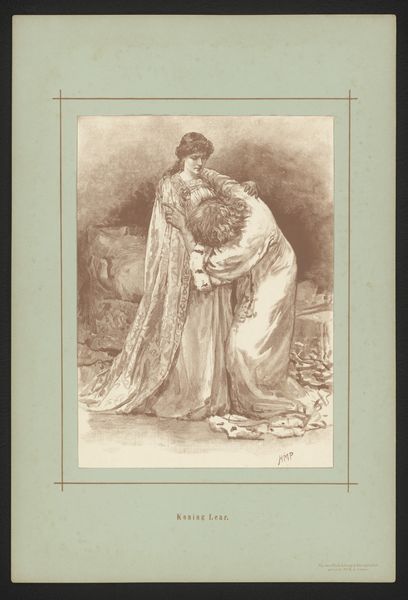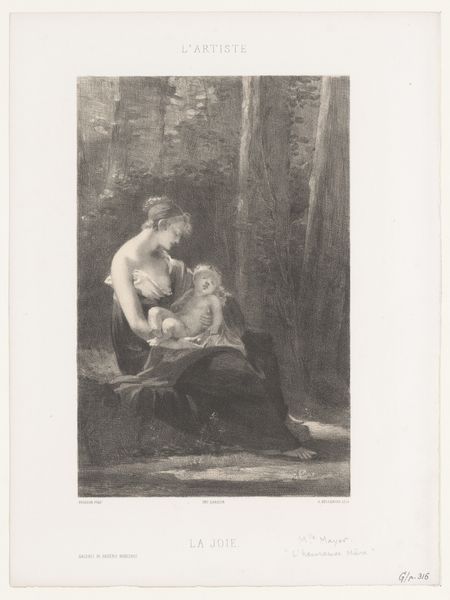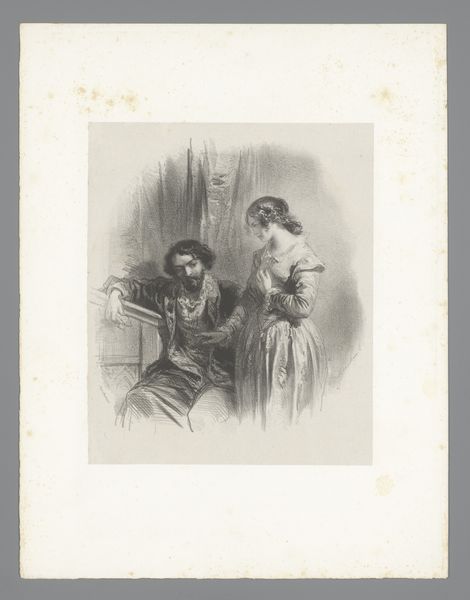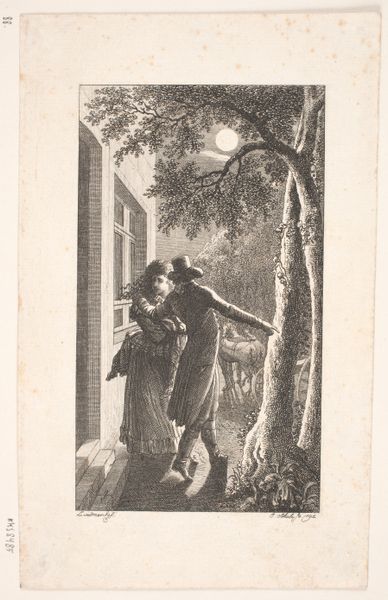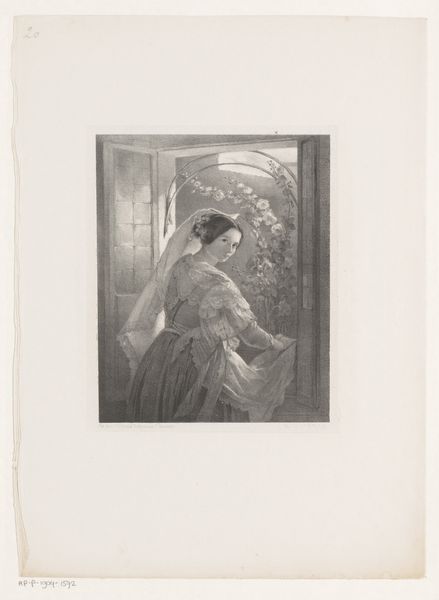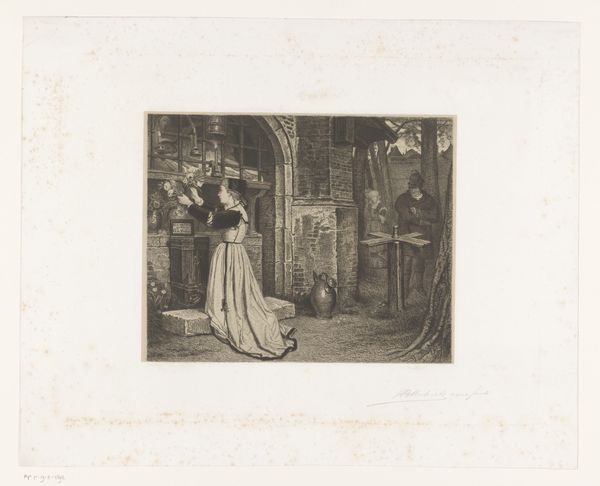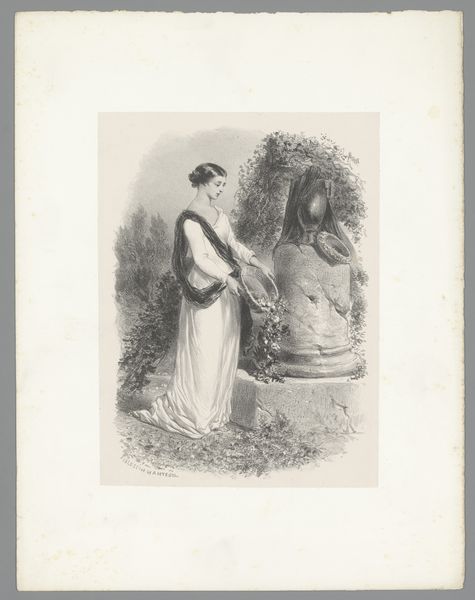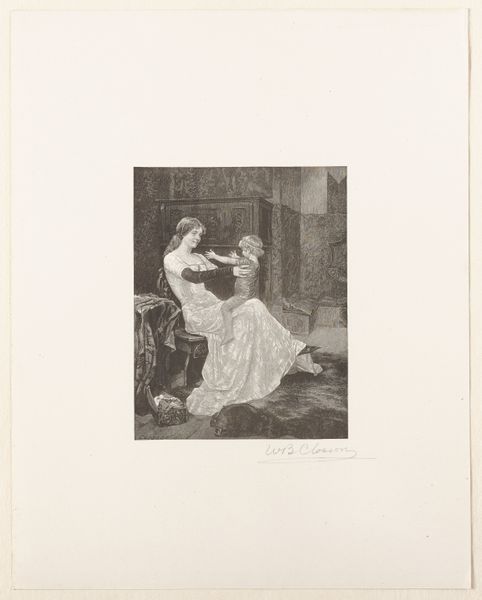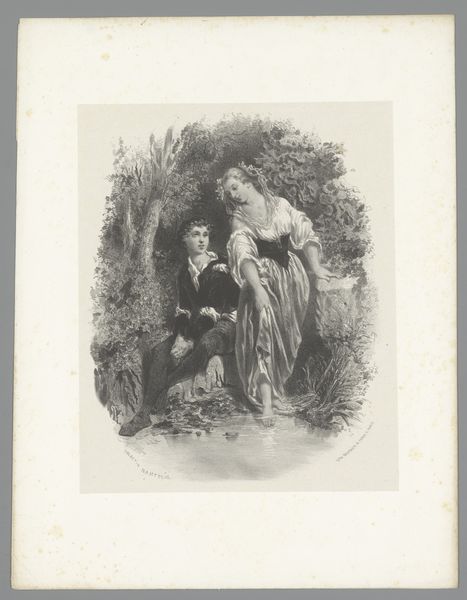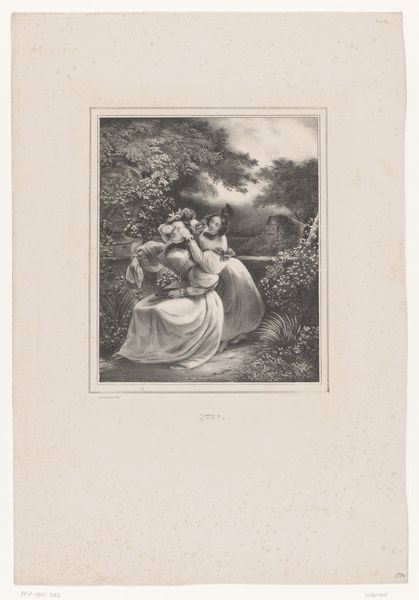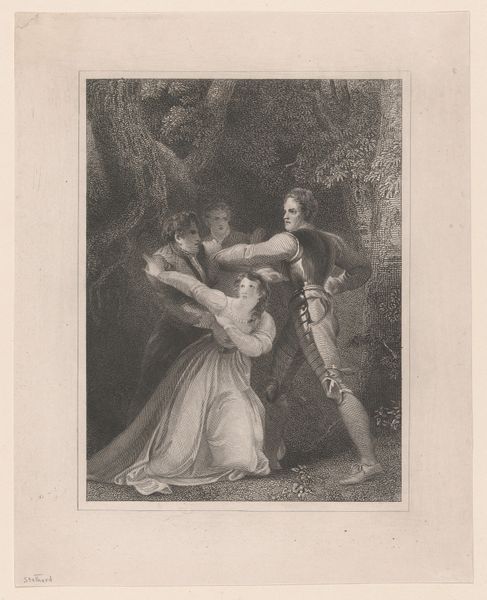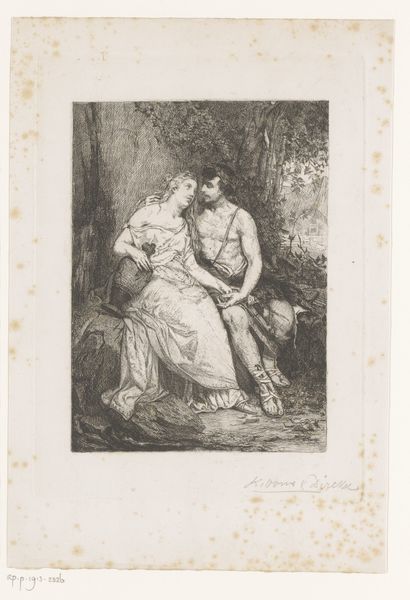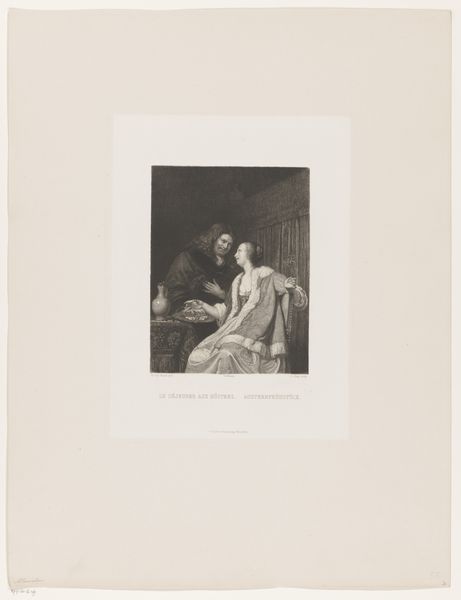
drawing, print, paper, engraving
#
drawing
#
narrative-art
# print
#
landscape
#
figuration
#
paper
#
romanticism
#
genre-painting
#
engraving
Dimensions: height 335 mm, width 240 mm
Copyright: Rijks Museum: Open Domain
Editor: This is “Two Women and a Foundling,” an engraving on paper by Hermanus Johannes van den Hout, made sometime between 1823 and 1869. It’s… melancholic. There's a discarded baby, discovered by two women in a forest. What strikes you when you look at this, considering its context? Curator: Well, first, consider the social implications of foundlings in 19th-century Europe. Illegitimacy carried intense stigma, impacting women and children disproportionately. What does this image tell us about societal expectations placed on women during this period? Editor: That it was a hard time for women. What about the setting, this dark forest? Curator: Absolutely. The forest becomes a site of abandonment, a liminal space outside of societal norms. Think of fairytales – who gets left in forests and why? What does that say about power dynamics and social safety nets at the time? Also, notice the house in the background: are we to imagine the women are approaching from this home, maybe to take in the child, or maybe the artist wants us to draw conclusions about their privilege to avoid facing that precarity? Editor: I see your point. The home makes their lives very different from that of the child's. So you're saying this image isn't just sentimental; it's a commentary on the lives of women. Curator: Precisely! And how systems of power and poverty left many with agonizing choices. Look at the faces of the women: are they compassionate or condemning? Is it possible for them to be both? How might the artist feel about these realities? Editor: This engraving has made me think about the double standards and hardships women faced then… and in some ways still face today. Curator: Indeed. Art can be a mirror reflecting enduring social challenges and inspiring critical thought about whose stories get told, and how.
Comments
No comments
Be the first to comment and join the conversation on the ultimate creative platform.
